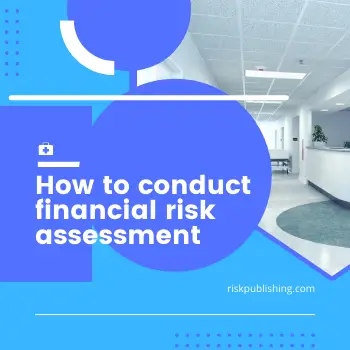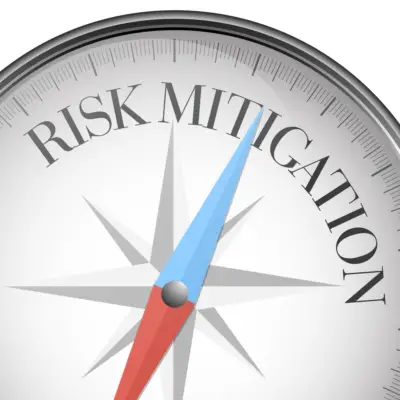Formal risk assessment is a fundamental process in the field of risk management that aims to systematically identify, analyze, and evaluate potential risks associated with a specific activity or project.
It gives organizations valuable insights into the likelihood and impact of various risks, allowing them to make informed decisions and develop effective mitigation strategies.
This article explores the definition of this concept, its purpose, the steps involved, its importance in decision-making processes, successful case studies showcasing its implementation, and best practices for conducting it.
By establishing a structured approach towards risk evaluation, formal risk assessment enables organizations to proactively address uncertainties and minimize their adverse effects on business operations.
Through this analytical methodology, stakeholders can gain a comprehensive understanding of potential threats and opportunities that lie ahead.
Consequently, they can allocate resources more efficiently and implement appropriate controls to reduce the probability or severity of identified risks.
Understanding the concept of formal risk assessment is crucial for professionals involved in various industries as it equips them with the tools necessary for effective decision-making in complex environments.
Organizations can improve their resilience and stay competitive in the fast-changing business world by following established guidelines and relying on trustworthy data sources.

Understanding the Purpose of Risk Assessment
The purpose of risk assessment is to systematically analyze potential hazards and vulnerabilities to identify, evaluate, and prioritize risks for the purpose of making informed decisions and implementing appropriate risk mitigation strategies.
Risk assessment is essential in various fields such as business, healthcare, environmental management, and safety planning. By understanding the purpose of risk assessment, organizations can effectively manage and reduce potential risks that may impact their operations or goals.
The process involves identifying potential threats, assessing their likelihood and potential consequences, and determining the level of risk associated with each hazard. This enables decision-makers to prioritize risks based on severity and allocate resources accordingly.
Furthermore, a comprehensive understanding of the purpose of risk assessment allows organizations to develop effective risk mitigation strategies that minimize negative impacts while optimizing opportunities for success.
The Steps Involved in Formal Risk Assessment
One of the initial stages in conducting a systematic evaluation of potential hazards involves analyzing various factors that may pose threats or vulnerabilities. Formal risk assessment typically follows a structured approach consisting of several steps.
The first step is identifying and characterizing the specific risks being assessed. This includes determining the scope and boundaries of the assessment and defining the objectives and desired outcomes.
Next, relevant data is collected through various sources such as literature reviews, historical records, and expert opinions.
Once the data is gathered, it is analyzed to assess the likelihood and severity of each identified risk. This step often involves using statistical tools and models to quantify risks objectively.
Finally, based on the analysis results, appropriate risk management strategies are developed to mitigate or control these risks effectively. These steps ensure a comprehensive understanding of potential hazards and provide valuable insights for informed decision-making processes.
The Importance of Formal Risk Assessment in Decision-Making
An essential aspect to consider in the decision-making process is incorporating a systematic evaluation of potential hazards and vulnerabilities.
Formal risk assessment plays a crucial role in this process by providing a structured approach to identify, analyze, and evaluate risks.
One key component of formal risk assessment is data analysis, which involves gathering relevant information and using statistical methods to quantify risks.
This helps decision-makers make informed choices based on evidence rather than intuition or subjective judgment.
However, there are potential challenges in implementing formal risk assessment, such as data availability and quality, data interpretation biases, and the complexity of assessing interconnected risks.
Overcoming these challenges requires careful consideration of methodologies, expertise in data analysis, and continuous monitoring and reassessment of risks to ensure effective decision-making.
| Potential Challenges | Role of Data Analysis |
|---|---|
| Availability & Quality | Quantifying Risks |
| Bias | Evidence-based Choices |
| Complexity | Continuous Monitoring |
Case Studies: Successful Implementation of Formal Risk Assessment
Exemplifying the successful incorporation of systematic evaluation, real-life cases vividly illustrate the effective implementation of structured approaches to identify and evaluate potential hazards and vulnerabilities.
These successful case studies demonstrate the benefits of formal risk assessment in decision-making processes. By utilizing a systematic framework, organizations can comprehensively analyze risks, prioritize actions, and allocate resources efficiently.
One such case study involved a multinational manufacturing company implementing formal risk assessment protocols across its global operations. This resulted in improved risk management strategies, reduced incidents, and enhanced overall organizational resilience.
Another example is a government agency that successfully integrated formal risk assessment into its policy-making process. As a result, they could make informed decisions based on evidence-based assessments, leading to better resource allocation and increased public safety.
These case studies highlight the tangible advantages of formal risk assessment methods in decision-making processes.

Best Practices for Conducting a Formal Risk Assessment
It is essential to follow established guidelines and methodologies when conducting a formal risk assessment to ensure a comprehensive and effective analysis of potential hazards and vulnerabilities.
This process involves utilizing various risk assessment tools and frameworks to identify, analyze, and evaluate risks within an organization or system.
When conducting a formal risk assessment, several best practices should be followed:
- Utilize a structured risk assessment framework: Adopting a recognized framework such as ISO 31000 or NIST SP 800-30 provides a systematic approach to identifying risks, assessing their likelihood and impact, and developing appropriate risk mitigation strategies.
- Involve relevant stakeholders: Engaging key stakeholders throughout the risk assessment process ensures that all perspectives are considered, increases buy-in for risk management decisions, and improves the accuracy of the assessment.
- Use reliable data sources: Collecting accurate and up-to-date data from reliable sources enables objectively evaluating risks.
- Regularly review and update assessments: Risk assessments should not be seen as one-time activities but rather ongoing processes that need regular review to reflect organizational or external changes.
Organizations can gain valuable insights for decision-making by conducting formal risk assessments while adhering to these best practices.
Frequently Asked Questions
What are the common challenges or obstacles faced during implementing formal risk assessment?
Common challenges and obstacles in implementing formal risk assessment include lack of resources, inadequate expertise, resistance from stakeholders, difficulty obtaining necessary data, and complexity of risk analysis methodologies.
What are some common misconceptions or myths associated with formal risk assessment?
Common misconceptions about formal risk assessment include it being a time-consuming process, only applicable to certain industries, and a guarantee of complete risk elimination.
While it does have benefits like informed decision-making, it also has limitations such as uncertainty and subjectivity.
Are there any legal or regulatory requirements that organizations must comply with when conducting formal risk assessments?
Organizations conducting formal risk assessments must adhere to legal requirements and regulatory compliance.
This ensures that the assessment follows established guidelines and protocols, promoting accountability and mitigating potential liabilities.
How does formal risk assessment differ from informal risk assessment methods?
Formal risk assessment differs from informal methods in following a structured and systematic approach, using standardized frameworks and tools.
This provides several advantages, such as consistency and reliability, but may also have limitations regarding time-consuming processes and potential oversimplification.
Can formal risk assessment be used in different industries or is it specific to certain sectors?
Formal risk assessment can be applied across different industries due to its use of technology.
Regardless of the sector, it offers several benefits, such as improved decision-making, increased accountability, and enhanced risk mitigation strategies.

Conclusion
Formal risk assessment plays a crucial role in decision-making by providing a structured framework for identifying and evaluating potential risks.
By following the steps involved in formal risk assessment, organizations can effectively manage and mitigate risks, leading to better-informed decisions.
Case studies have shown successful implementation of formal risk assessment in various industries, further highlighting its importance.
Adhering to best practices ensures a thorough and accurate analysis of risks, enhancing the overall effectiveness of the assessment process.
In general, formal risk assessment is a valuable tool that organizations can use to navigate uncertainties and make informed decisions.

Chris Ekai is a Risk Management expert with over 10 years of experience in the field. He has a Master’s(MSc) degree in Risk Management from University of Portsmouth and is a CPA and Finance professional. He currently works as a Content Manager at Risk Publishing, writing about Enterprise Risk Management, Business Continuity Management and Project Management.

